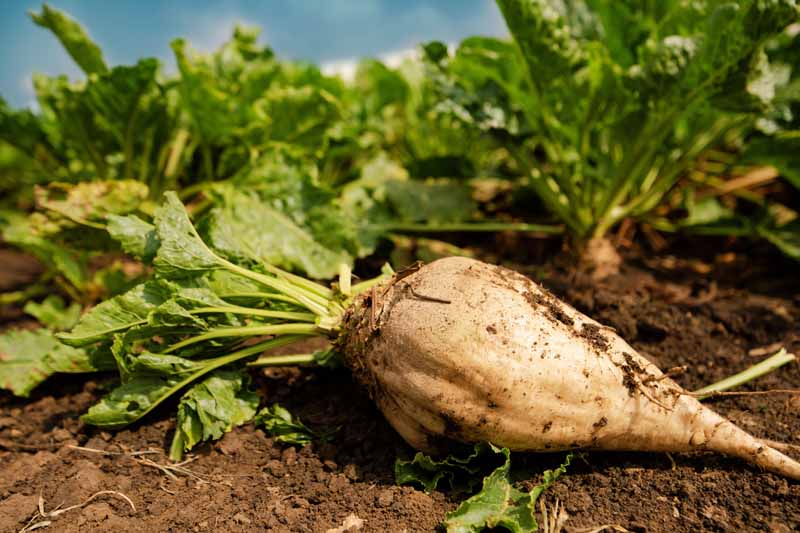As autumn sweeps across the landscape in its stunning display of vibrant hues, the earth gradually prepares for a season of slumber. Leaves gracefully descend from their lofty branches, and the crisp air whispers tales of change and transformation. Yet, amidst this enchanting tapestry of nature, a question quietly emerges for the avid gardener: “Can you plant sugar beets in the fall?” While the notion may seem improbable at first, this article endeavors to explore the potential magic that lies within the autumnal soil, unraveling the mysterious possibilities that lay beneath the surface. Cast aside doubt and embark on this journey of discovery, as we delve into the world of sugar beets and the captivating dance between man and nature.
– The Ideal Conditions for Planting Sugar Beets in the Fall
Sugar beets are a versatile and hardy crop that can be successfully planted in the fall, provided the ideal conditions are met. Fall planting offers a number of benefits, such as an extended growing season and the ability to establish stronger root systems before the arrival of winter. However, it is important to carefully consider the timing, soil conditions, and temperature requirements to ensure the best chances for a successful harvest.
Timing is crucial when it comes to planting sugar beets in the fall. Ideally, seeds should be sown 8-10 weeks before the first expected frost date. This allows sufficient time for the beets to germinate and establish themselves before the onset of cold weather. It is also important to consider the length of the growing season in your region, as sugar beets typically require 90-100 days from planting to harvest.
In terms of soil conditions, sugar beets thrive in well-drained loamy soil with a pH level between 6.0 and 7.5. It is essential to prepare the soil before planting by removing any weeds, rocks, or debris and incorporating organic matter such as compost or well-rotted manure. This not only improves the soil’s fertility but also enhances its ability to retain moisture. Additionally, it is advisable to conduct a soil test to assess the nutrient levels and make any necessary amendments.
To ensure optimal growth and yield, sugar beets require a cool but frost-free environment. They are tolerant of cooler temperatures and can withstand light frosts, but prolonged exposure to freezing temperatures can be detrimental. Therefore, it is crucial to monitor the weather forecast and be prepared to protect the beets from extreme cold. This can be achieved by implementing measures such as covering the plants with straw or using row covers.
In summary, while fall planting of sugar beets offers numerous advantages, it requires careful attention to timing, soil conditions, and temperature fluctuations. By providing the ideal conditions for growth and taking necessary precautions, farmers and gardeners can enjoy a bountiful harvest of this versatile and nutritious root crop.

– Exploring the Benefits of Fall Planting for Sugar Beets
Fall planting can provide numerous benefits for sugar beet cultivation. While traditionally, sugar beets have been planted in the spring, more and more farmers are discovering the advantages of fall planting. One of the key benefits is the extended growing season that fall planting allows. By planting in the fall, sugar beets have a head start on growth compared to spring-planted beets. This extra time in the ground allows for more root development, resulting in larger and higher-quality sugar beets.
Another advantage of fall planting is the reduction in weed pressure. With most weed species becoming less active during the fall months, the competition for resources is minimized. This leads to less time spent on weed control and a healthier crop. Additionally, fall planting can help improve soil structure. As sugar beet roots develop throughout the fall and winter, they help break up compacted soil and create channels for better water and nutrient absorption.
If you̵
7;re considering fall planting for your sugar beets, here are some features and tips to keep in mind:| Feature/Tips | Benefits |
|---|---|
| Choose appropriate varieties | Early maturation, higher yields |
| Prepare the soil in advance | Promote root growth and nutrient availability |
| Monitor soil moisture | Optimal conditions for germination and growth |
By carefully considering these features and tips, you can maximize the potential of your sugar beet crop and enjoy the benefits of fall planting. So, if you’ve been wondering if you can plant sugar beets in the fall, give it a try and see the difference it can make in your harvest.
– Successful Strategies for Planting Sugar Beets in Autumn
Successful Strategies for Planting Sugar Beets in Autumn
In many regions, traditional agriculture practices have taught us that spring is the optimal time for planting sugar beets. However, with some careful planning and the right techniques, it is indeed possible to plant sugar beets in the fall. Autumn planting can be an advantageous strategy for farmers looking to maximize their yield and take advantage of the prime growing conditions that this season brings.
To successf
ully plant sugar beets in the fall, here are a few strategies and tips to keep in mind:| Features/Tips | |
|---|---|
| Better soil conditions | Utilize the warm soil temperatures in autumn to your advantage. The increased moisture availability and reduced competition for nutrients allow for optimal seed germination and root development. |
| Pests and diseases control | Fall planting can help mitigate the risks associated with certain pests and diseases that are more prevalent in the spring. The cold temperatures during winter can help break the pest and disease cycles, resulting in healthier crops. |
| Crop rotation benefits | Utilize the opportunity to rotate your crops by planting sugar beets in autumn. This practice helps break weed, pest, and disease cycles while improving soil fertility for future growing seasons. |
By adopting these strategies and understanding the unique benefits that autumn planting provides, farmers can harness the potential of sugar beet cultivation during this season. So, whether you are a seasoned farmer or just starting with sugar beets, don’t hesitate to consider fall planting as a viable option for successful sugar beet production.


